Superb 1909 Burrell showman’s returns at Llandudno
Posted by Chris Graham on 13th September 2024
Stuart Phillips’ 1909 Burrell showman’s road loco Fermoy made a welcome return to the rally scene at Llandudno, as David Reed reports.
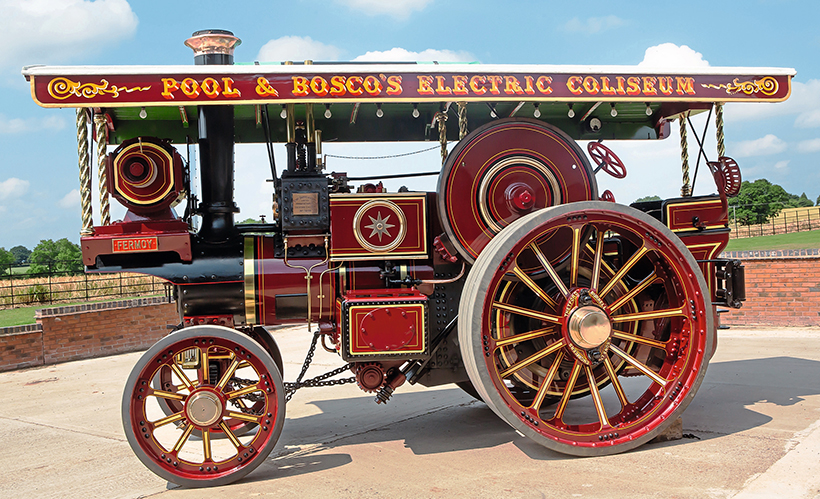
Burrell showman’s loco: The stunning Fermoy is a credit to the owner, particularly as this has not been a ‘cheque book’ restoration. (Photo: David Reed)
One of the stars in the north-west this year has been Fermoy, Stuart Phillips’ superb 1909 Burrell 5hp DCC heavy duty showman’s road locomotive No. 3090 that was making its rally return after being away from the scene since 2014.
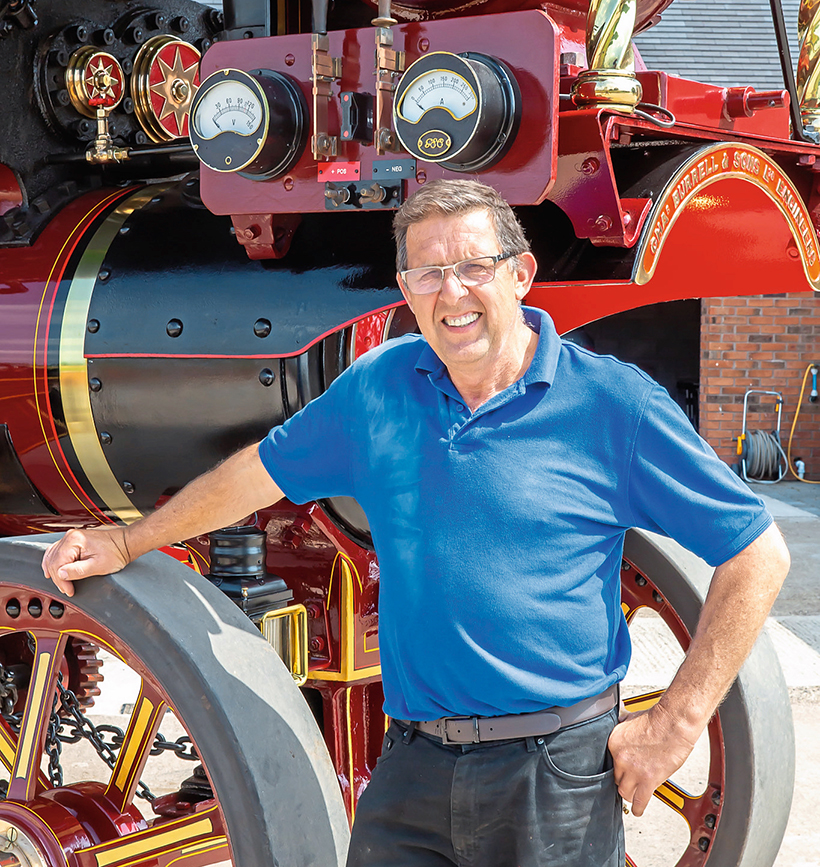
Stuart with the engine; he has done much of the restoration work. (Photo: David Reed)
The history of Fermoy is an interesting and varied one. When it left the Burrell works, it was supplied to Midland’s showmen Pool & Bosco of 470 Dudley Road, Birmingham. Here it was named after the town of Fermoy in County Cork, Ireland, where Pool & Bosco had their head office, although the Burrell never actually went to southern Ireland.

Fermoy threshing at Marshe’s Felton Farm in 1939/40. A young Dick Woolley can be seen near the front wheel, with Bill Jones, known as ‘One Eyed Jones,’ by the baler’s flywheel. Fermoy is powering a new Marshall threshing drum. (Photo: Stuart Phillips Collection)
Its next owner was Thomas Cunliffe and then Therese Shepherds of Cannock, when its days of working on the fairgrounds were over; Fermoy was employed on timber work with Bishop Brothers of Burley where it was stripped of its showland fittings, and later on threshing during WWII. After a series of owners, it passed to the famous engine saver Dick Woolley of Bucknell, Shropshire in 1950 who is classed as the engine’s first owner in preservation. In fact the buildings where Dick had his business at Bucknell still survive today.
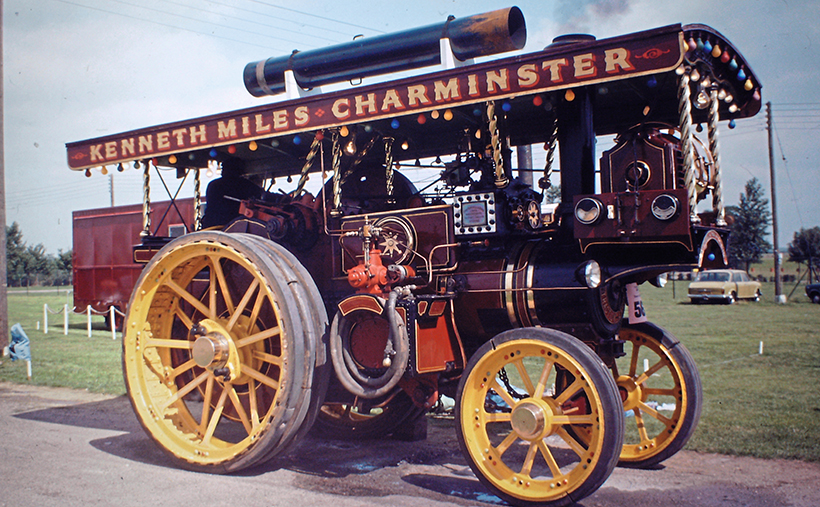
As we came to know the engine for many decades. Fermoy is seen at the Peterborough Expo on 26 August 1978, at this the largest rally in the UK. (Photo: Bob Moorman)
Fermoy was later acquired by Ken Miles of Dorchester who recognized the engine’s history and decided to rebuild it back to showman’s specification; he rallied for many years at the Great Dorset Steam Fair and before that at John Crawley’s August bank holiday Peterborough Expo that was held on the now-gone showground – the engines paraded on the Speedway track over the three-day event.
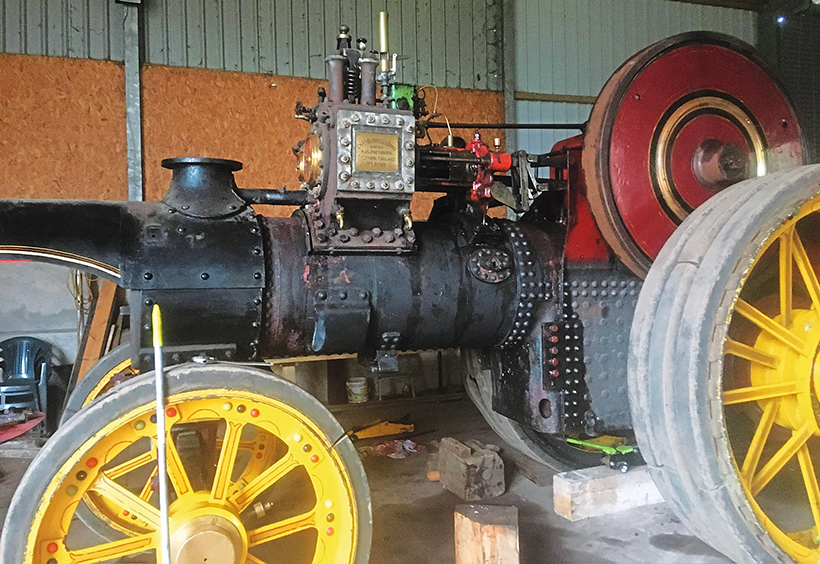
The first thing to do was to dismantle the engine completely, to see what needed doing. (Photo: Stuart Phillips)

Fermoy being dismantled at the start of the restoration process. Here the engine is reduced to the boiler assembly as the firebox is being cut out. (Photo: Stuart Phillips)
After Ken’s passing the engine went to Russell Cooke of Bridgenorth in Shropshire in 1995 with whom it continued to be seen on the rally scene. The engine was last steamed in 2014 for the funeral of 91-year-old Joe Lawley, who was known to all as ‘Landy.’ A steam enthusiast for all his life, Landy had requested that upon his death, he was allowed to make his final journey on a wagon pulled by Fermoy, an engine that he had known since the 1930s.
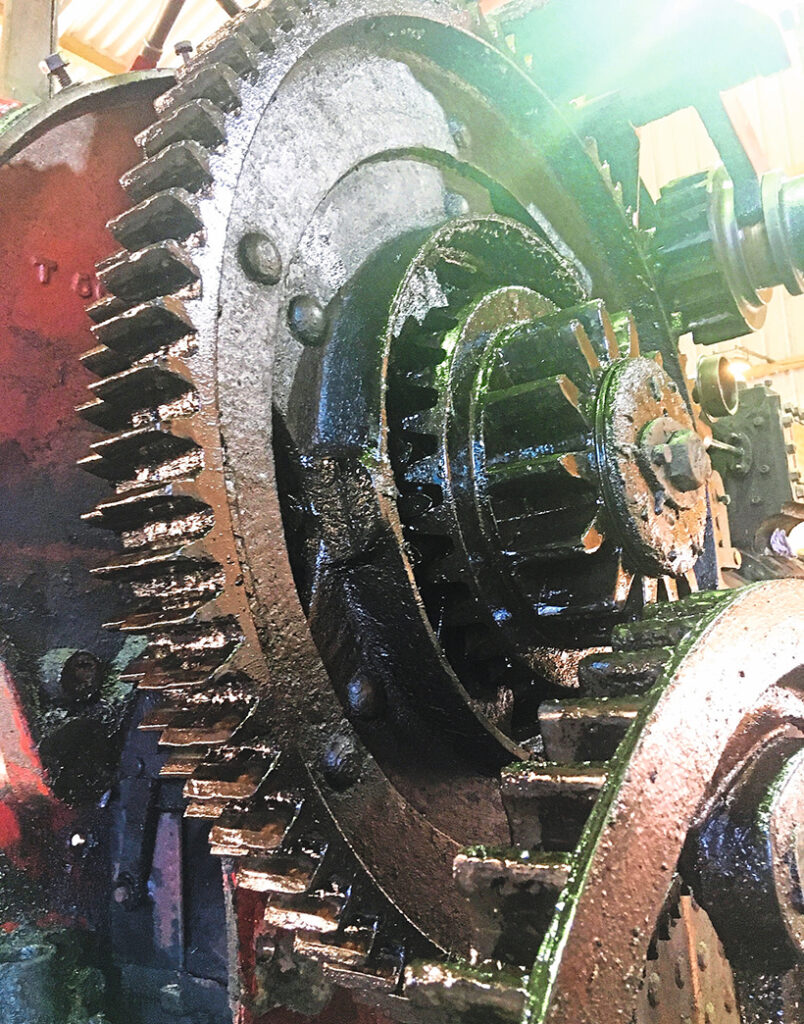
There was a lot of grease and oil on the gears which is a good thing, but they are rather worn. (Photo: Stuart Phillips)
It had been the first engine that he worked on at the saw mills, as well as using it for timber haulage, and it was the first engine that he ever steered. It was a fitting send off all round. By 2014 the engine was well worn and needed a total rebuild in every department.
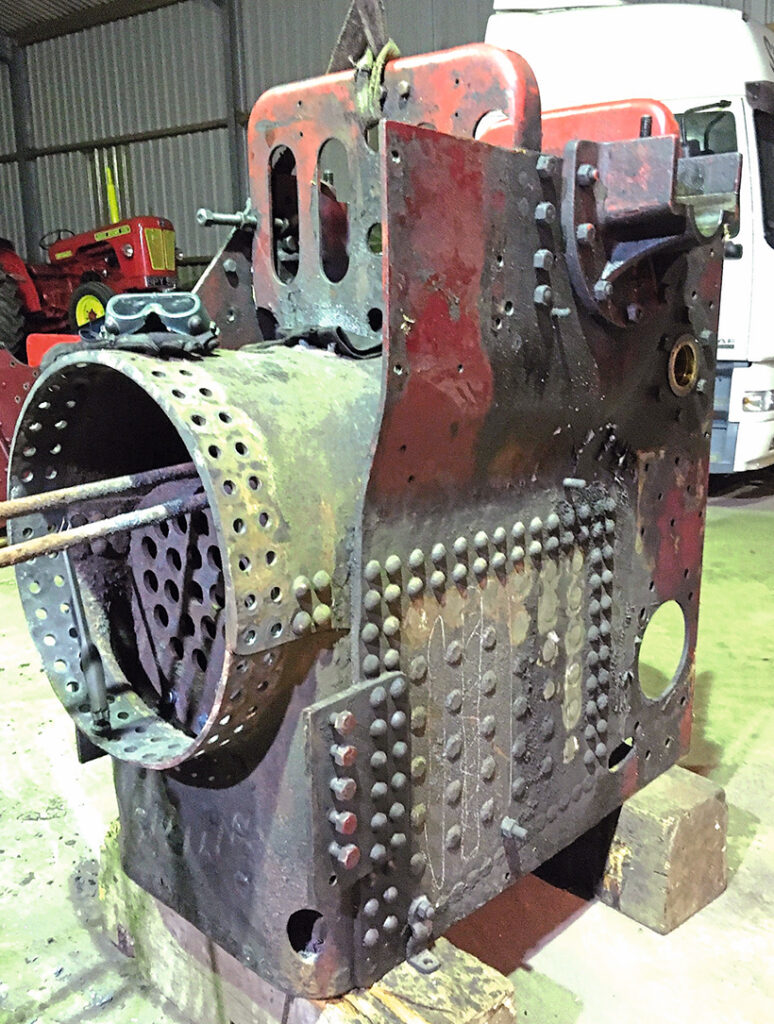
The firebox was in poor condition when the engine was dismantled. (Photo: Stuart Phillips)
By 2020 the word was out that the Burrell might be up for sale, this came to the attention of Stuart Phillips, “I had been looking for an engine to buy, and went to see Russell,” he said, “one of the attractions was that I could have it as a road locomotive or a showman’s engine.” In the end the showman’s configuration was the preferred option, “I decided to restore it to as it would have looked when it came out of the factory back in 1909, which is easier said than done.” Stuart added.
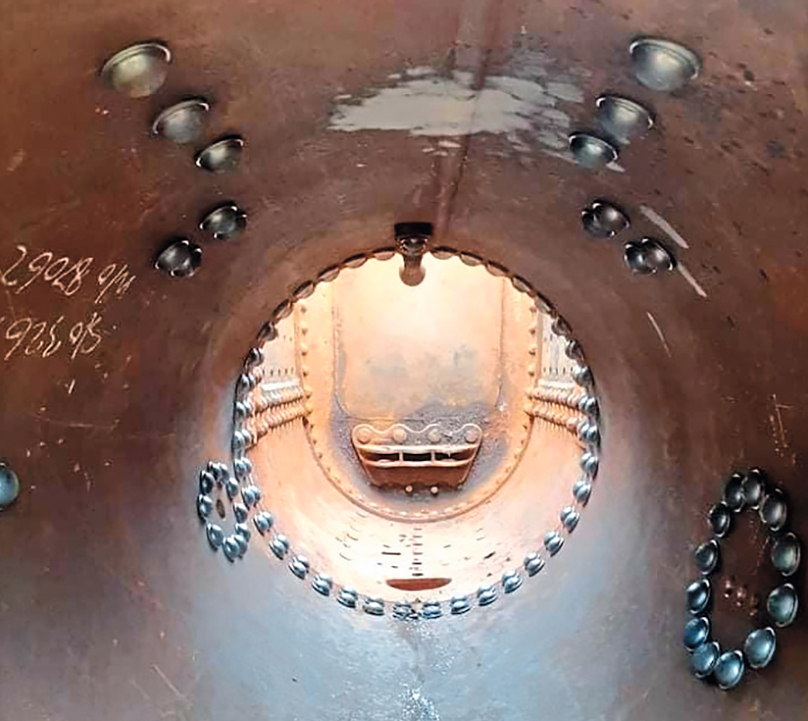
While waiting for the firebox we look at the riveted boiler from the inside. (Photo: Stuart Phillips)
After some negotiations a deal was done which eventually happened, with Fermoy being transported the relatively short distance to Stuart’s Shropshire base. On 1 October 2020 the engine steamed up, although it was soon discovered that the engine was more or less worn out. “The next day we steamed the engine again, but a tube went,” Stuart continued, “So that was the start of its restoration.”
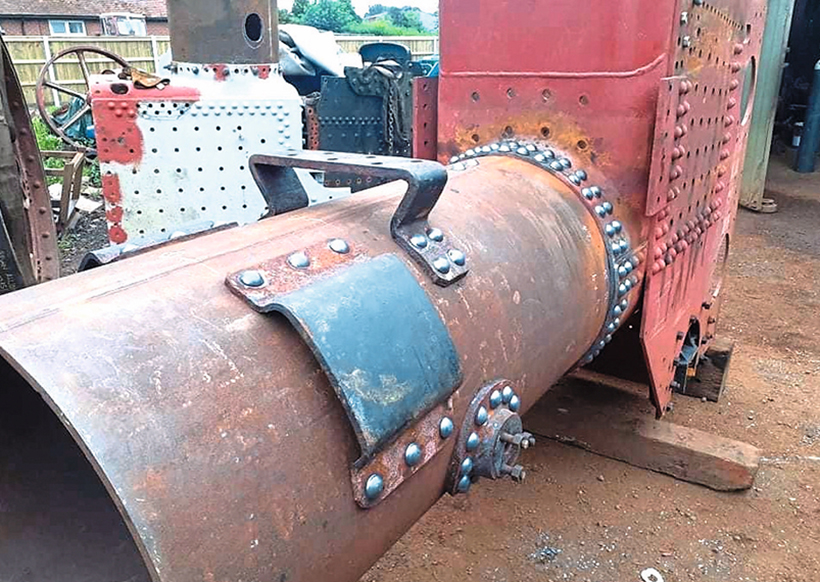
All riveted up with the new lower throat-plate welded in. (Photo: Stuart Phillips)
Realising that some serious work was needed, Stuart asked his boiler inspector, Jonathan Wheeler, to have a look at the engine. It was not good news, but at the same time not unexpected, “The firebox was condemned, as was the barrel,” Stuart said. “We decided to have a new front tubeplate made,” Stuart continued, “And to cut out and weld back a new tombstone on the backhead and a new skirt at the bottom of the throat plate.”
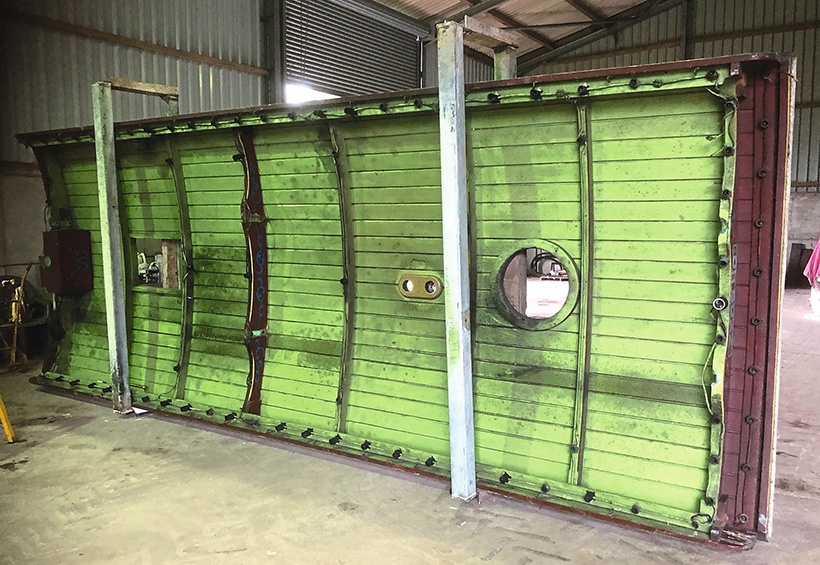
The roof had a major rebuild before it went back on. (Photo: Stuart Phillips)
Now the real work started, “There was only one thing to do, strip the engine right down,” Stuart said, “With pallets of bits spread across the workshop’s floor.” The barrel was soon removed along with the firebox which turned out to be a tricky operation. “The problem was that the stays and the rivets on the foundation ring had all been welded up,” Stuart explained, “The hardest thing to do was to get the foundation ring out, and it had to be sliced with the cutting torch to remove it.” Once out, Richard Phillips of Mendip Steam Restoration was commissioned to make a new riveted and flanged firebox, according to Burrell’s drawings.

Although the belly tank was in reasonable condition, it still needed a new bottom section to be fabricated. (Photo: Stuart Phillips)
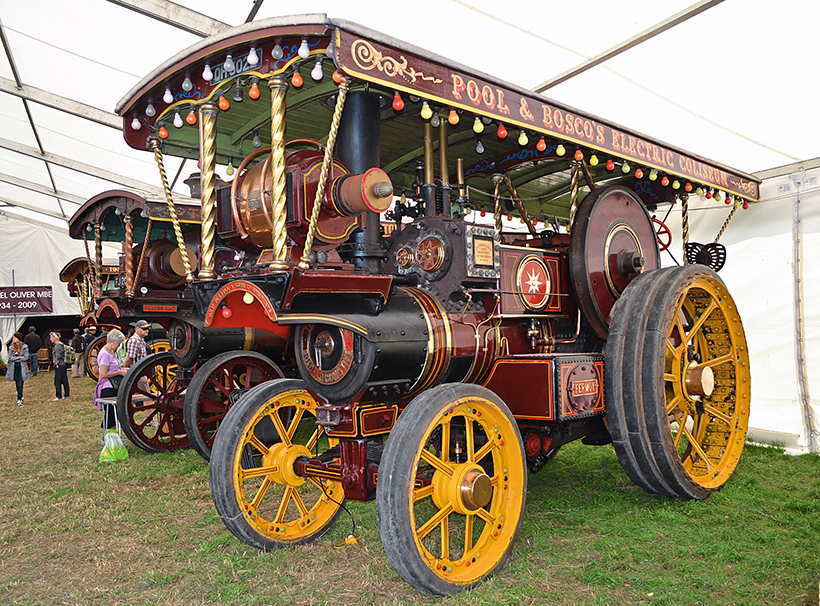
Just memories now; Fermoy in the amazing marquee on 23 August 2018. (Photo: Bob Moorman)
This feature comes from the latest issue of Old Glory, and you can get a money-saving subscription to this magazine simply by clicking HERE
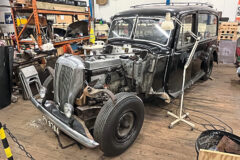
Previous Post
We visit the fabulous Ipswich Transport Museum
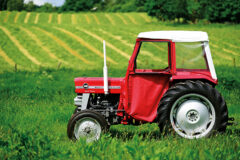
Next Post
A superbly-restored, 1972 Massey Ferguson 148



